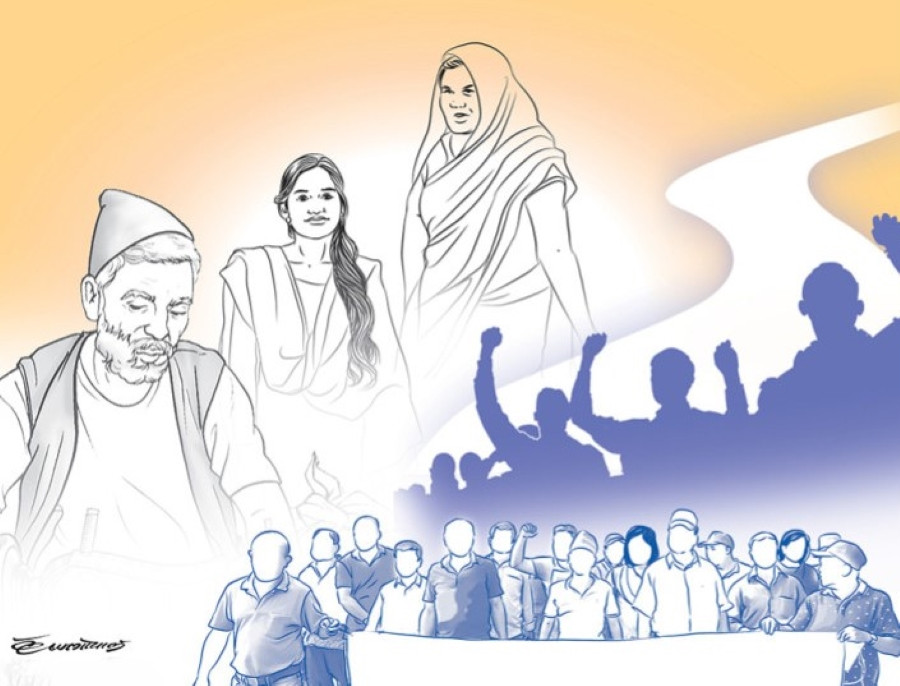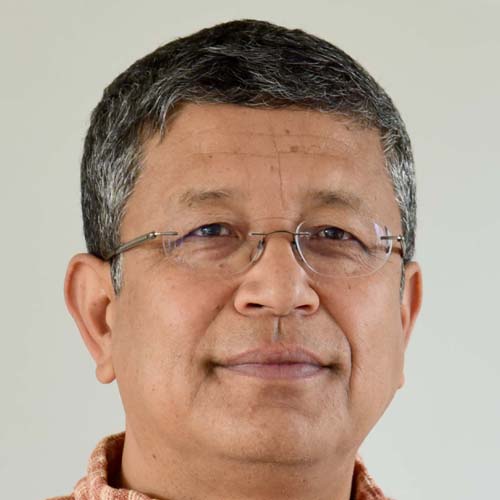Columns
Vive le Népal
Though poorer, Nepal has quietly surged ahead of India in many respects.
Deepak Thapa
Back in 1983, India was trundling along, as it had since independence, at its ‘Hindu rate of growth’. I was in Calcutta, enrolled in a college, but generally being educated in other ways. One such edifying instance was when a friend and I walked into what looked like a nice-looking store on a side road off the famous Park Street. As we entered, there was a flurry of movement among the store clerks arrayed behind the long U-shaped counter that went around the room, and we were taken aback at the sight of all those ‘uncles’ standing up ready to serve us teenagers. My friend was hoping to buy a shirt for his father but upon hearing the prices we made a dignified but hasty exit; a single shirt would have cost nearly as much as our entire monthly allowance.
That such high-end shops even existed was a testament to the purchasing power of a small group of wealthy Indians who have always been around. According to a recent research paper, in the early 1980s, the top 10 percent owned 45 percent of India’s national wealth. Given the population of India, that would have been a number large enough to keep the luxury goods market humming.
Following the liberalisation of the early 1990s, the Indian economy took off, with its GDP galloping 13-fold since 1991. Ours also grew by 10 times, but because the Indian economy is 90 times larger, the actual volume of increase there is staggering. Over the decades, there have been visible changes in how people live, dress and spend and also in infrastructural growth everywhere. The Indian middle class is now 400–600 million strong, depending on how one defines it. And, as The Economist put it, with enough spending clout that ‘[a]round the world tourism boards, hotels and restaurateurs are starting to compete for Indian travellers’. All stuff of dreams for a country like ours, characterised by perennial misgovernance and mismanagement.
Other side of the story
Sadly, that is only part of the equation since India’s rise has masked extreme inequalities. The concentration of wealth at the top has worsened, with the top 10, 1 and 0.1 percent, respectively, owning 65, 40, 29 percent of the national wealth. Conversely, in 1991, the bottom 50 percent and the middle 40 percent possessed 9 and 41 percent of the country’s wealth. By 2023, their share had gone down to 7 and 29 percent; the richest 1 percent of Indians owned more than the combined total of 90 percent of their compatriots at the bottom.
So, what does that mean for people at the margins? Part of the answer is to be found in a remarkable book I chanced upon, Unequal: Why India Lags Behind Its Neighbours, by Swati Narayan of the OP Jindal Global University. Published in late 2023, the author compares India with Bangladesh, Nepal and Sri Lanka. Since I could not find any discussion of the book in our media, this piece provides a few insights from it, albeit limited mainly to Nepal.
Although she uses national figures, when taking specific examples from North India, Narayan compares the state of Bihar with Bangladesh and Nepal given the similarity in average incomes in all three. She looks at various indicators to forcefully lay out the case that despite its impressive growth, India has slowly become the regional laggard.
Narayan found that students in Bihar’s government schools invariably sat on the floor compared to the 85 percent of students in Nepal and 66 percent in Bangladesh who were at desks. As someone coming after fieldwork in Bihar, she was quick to note that in her study village in the hills of Sindhuli, ‘the seating arrangements did not reflect any bias based on caste or religion’.
Infant mortality in India was 33 per 1000 live births compared to 29 in Bangladesh and Nepal, with the latter ‘amongst the fastest countries of the developing world to reduce child deaths—even in the thick of a guerrilla war’. In terms of malnutrition among children up to the age of six, 22 and 27 percent, respectively, in Bangladesh and Nepal were to be ‘too thin for their age’, a figure that was 32 percent in India. In the provision of health services, major differences were evident. Her survey found that far more health facilities in Nepal and Bangladesh had stocked at least half of the 13 basic medicines. No wonder people from Uttar Pradesh ‘routinely cross the border to go to Nepal, as healthcare was cheaper and better there’.
When asked if people in their family had gone to bed on an empty stomach, Narayan found women in Bangladesh and Nepal to be ‘truly puzzled by this question’ and that over 90 percent of her respondents were quite certain no one had. That was not the case in Bihar where the ‘downcast eyes [of the women] and silences spoke volumes of their own haunting deprivation’.
Unmistakable improvements
Narayan’s book is a treasure trove of such figures. But I also found some of her narrative descriptions more revealing. I present one such longish vignette that struck me.
‘Her sleeveless dress and quiet confidence were a breath of fresh air in the dusty, ramshackle home. Most of the other women in this family, from the Dom caste, were dressed in crumpled saris. Renu’s husband, Jitu, too, in his smart shorts, looked completely out of place in this remote Bihari village. After we struck up a conversation, I realized that the young couple had just crossed the open border, less than a kilometre away, from Nepal to Bihar on a day trip to visit their family…The contrasts between these relatives who lived on different sides of the international border could not have been starker. In Kathmandu, Renu worked in a private canteen, while Jitu was a mechanic. The young couple were upwardly mobile and in good health and spirits. As a Nepali, Renu’s education in government schools had been free until grade eight. Every time her nine-month-old infant fell ill, she confidently took her to a nearby government health post for free treatment. The brimming self-assurance of this bright, young Dalit couple was not an exception. Since the return of democracy in 2006, as my research even a decade later showed, Nepal has witnessed an unmistakeable improvement in caste and gender equations…Their Indian relatives, on the other hand, were struggling to eke out a living. Renu’s sister-in-law Malati, who was born in Nepal and had shifted to India two decades ago after marriage, complained about the caste discrimination that her children faced in school. She also confided that she was petrified of her family falling ill. In this Bihari hinterland, there were no health centres nearby, nor were free medicines available.’
Narayan asks why Nepali women seem to be more empowered than their sisters in Bangladesh and Bihar, and why the governments of Bangladesh and Nepal have focused more on education and health. She believes that is because the emphasis has been on reducing inequalities arising from differences in wealth, caste and gender, a feat India seems to have lost sight of in its push for unbridled growth.
A comparative study of this kind certainly would not be able to capture the many nuances within a country as complex as Nepal. Narayan conducted her research in 2016, but we can only presume that we are still on the same right track despite all the governments that have come and gone since. As we usher in the festive season of Dashain, Tihar and Chhath, that would be something to cheer about.




 19.12°C Kathmandu
19.12°C Kathmandu















